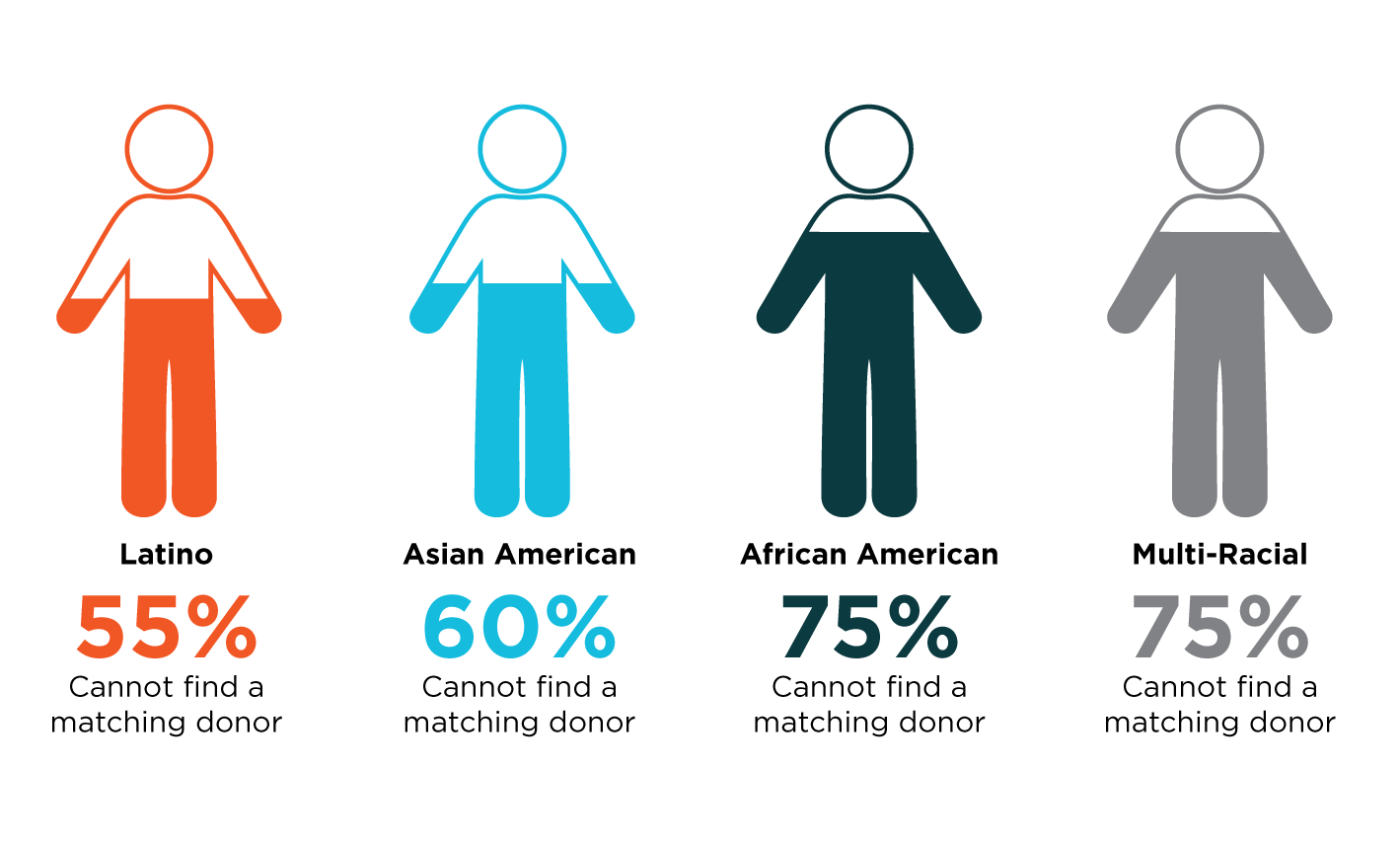


Texas pharmacist Howard (r) was diagnosed with a very rare form of leukemia. His life was saved by a stem cell transplant from donor Akiva.
Many life-threatening diseases have the potential to be cured by a bone marrow or peripheral blood stem cell (PBSC) transplant. Among them are terrifying diagnoses like leukemia, lymphoma, sickle cell disease, Fanconi anemia, and inherited immune disorders like Hyper IGM. In the past few years exciting new transplant possibilities have gained a lot of media attention, including the chance we can someday cure conditions like multiple sclerosis and Parkinson’s disease.
So, if bone marrow and stem cell transplants are so powerful, why are people still dying from these diseases? Why doesn’t everyone in need get a lifesaving transplant? There are three main reasons that prevent people from receiving a transplant:
For a transplant to work, the donor’s and the patient’s Human Leukocyte Antigens (HLA, which are proteins that regulate the immune system) must be a match. The matching factors are inherited from parents and ancestors and aligned with a person’s genetic heritage. There are billions of possible combinations of these immune factors, and some are rare and difficult to find. The best chance of finding a perfect match is with someone of the same genetic heritage. But even though there are now more than 33 million donors registered worldwide, with 7.7 billion people, that means only 0.43% of the world’s population is on the registry, less than half of one percent. You can help change this! If you are 18 to 35 years old and in good health, please join the registry.
We know that nearly half of patients who have a matching donor in the registry don’t receive a transplant because the search wasn’t started soon enough. For many patients there is only a short time period when they are able to go through the chemotherapy and radiation therapy needed to prepare for transplant. Once that moment passes, it is gone and the disease wins, even if they have a matching donor.
At Gift of Life, we encourage patients and physicians to begin the search process as soon as possible. Gift of Life offers patient support services to start tissue typing family members and doing a preliminary search of our registry even while deciding on a transplant center to work with. Once a transplant doctor is on board, this information can speed the time needed to find a match, or determine that there is no match and public swabbing drives are needed to help find a donor. If you want help searching for a donor, please call us at 1-800-962-7769.
Because matches are based on genetic heritage, the best chance of a match is with someone who shares a similar ancestry and ethnicity. But the worldwide registry is not as diverse as the world’s population. The chances of finding a donor are lowest for those of sub-Saharan African ancestry and those of mixed race. Gift of Life is committed to finding a match for every patient in need. The more we can diversify the registry to represent the full range of human populations, the more we increase the chances of a patient finding a donor.

There are two things you can do:
To hold a donor drive at your workplace, community event, school, place of worship, family gathering, or other event, please contact Gift of Life’s Community Engagement Manager by calling our headquarters in Boca Raton, Fla., 1-561-982-2900.
We’ll give you all the supplies you need, a training session on how to publicize and run a drive, and you can even set up a donor circle. This will allow you to see in real time how many donors you added to the registry, and whenever a match is found for a patient or a transplant is completed, you’ll be notified! It’s an exciting moment when you realize a person you invited to join the registry has saved someone’s life.
To learn more about the entire donation process, click here.